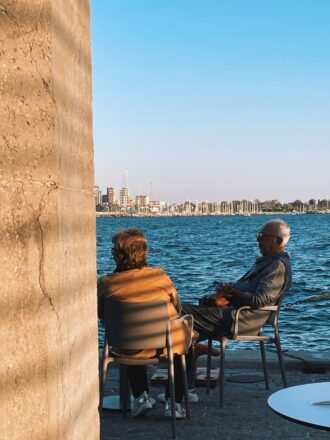Ensuring home safety is crucial for the well-being of the elderly, given the numerous hidden risks present in our everyday living spaces. This insightful article empowers you to create a safer home environment for the elders in your life by adopting low-cost modifications. From highlighting common household dangers like slippery floors and insufficient lighting to outlining a host of cost-effective improvements, you’re in for a rewarding read. Discover the benefits of modern technology like GPS trackers and cell phones for seniors, especially those with Alzheimer’s or dementia. Gain insights on varying degrees of home modifications and the value of professional consultations from occupational therapists. Learn easy changes such as augmenting your house lighting, installing pull bars, and even changing your faucets. The article goes a step further to address wheelchair accessibility adjustments, as well as advocating for smart locks and security systems. By the end of your reading, you’ll be equipped with a broad array of tips and tricks destined to transform your home into a safer haven for the elderly.
Identifying Risks for Elderly at Home
Understanding common home safety hazards
For elderly individuals, common home safety hazards often go overlooked. It’s easy to forget about things like the risk of tripping on uneven flooring, the potential dangers posed by poor lighting, or the challenges that clutter can present. Yet, these are the factors that are so vital to be aware of, particularly as it relates to the elderly due to their impact on mobility and the performance of daily activities.
Significance of professional help in identifying risks
While it is possible to identify and address safety hazards on your own, professional help can offer much-needed expertise. Professionals such as occupational therapists can do more than just pinpoint areas of concern. They can also provide appropriate and practical solutions to ensure a safer environment. In addition, they can forecast potential accommodations that might be required in the future, giving you ample time for planning and adjustments.
Tech Enhancements for Elderly Safety
The role of GPS trackers
With advancements in technology, ensuring the safety of your elderly loved ones has become much more manageable. One such technology is GPS trackers. These devices can significantly enhance safety, especially for individuals living with conditions like Alzheimer’s or dementia. GPS trackers enable family members to locate their loved one quickly, providing peace of mind and added security.
Cellular devices and their contribution to safety
In the digital age, cell phones are no longer a luxury; they are a necessity. When it comes to the elderly, they can be a lifeline. With features such as speed dial for emergency numbers, visual and audio aids, and even fall detection, cellular devices are a must-have for senior citizens.
Securing homes with smart door locks and security systems
Another wonder of technology is the advent of smart door locks and home security systems. These can provide an added layer of security, enabling you to monitor and control the home’s access remotely. Besides, some of these systems come with alarms that can alert you in case of unauthorized access, offering an additional safeguard.

Low-Cost Modification Options
Installing pull bars
One straightforward, low-cost safety modification you can make is installing pull bars. Strategically placed in areas like the bathroom or beside the bed, these bars will provide support and stability.
Increasing lighting
As we age, our eyesight tends to weaken. Hence, increasing the lighting in your home, especially in areas like the stairways, kitchen, and bathroom, can significantly reduce the risk of accidents.
Modifying faucets with rubber grips
Simple modifications like adding rubber grips to faucets can make a world of difference. Rubber grips provide a stronger hold and lessen the strain when turning on or off the faucet.
Removing tripping hazards
Consider removing any potential tripping hazards. An innocent looking throw rug or a random object on the floor could lead to a devastating fall. Ensure the paths in your house are clear and free from obstacles.
Ensuring Wheelchair Accessibility
Clearing spaces for easy navigation
If a wheelchair becomes a necessity, the layout of your house will need an adjustment. Ensure there is ample room for a wheelchair to move around without any obstruction.
Lowering countertops
Lowered countertops in the kitchen and bathroom can make daily activities such as cooking or washing up much more accessible.
Installation of grab bars
Similar to pull bars, grab bars installed in crucial areas around the home can provide the necessary stability and support, especially for those using a wheelchair.
Adjusting height of electrical switches
Lowering switches and controls also plays a significant role in making homes more accessible. It helps ensure that those with mobility issues can reach them without any discomfort or strain.

Major Home Renovations for Safety
Installation of wheelchair ramp
While this does require a bit more time and investment, installing a wheelchair ramp at the entrances and exits of your home can significantly enhance accessibility for those who need a wheelchair or walker to move around.
Adding a first-floor laundry and bedroom
By making sure all the primary facilities are on the first floor of the house, you can limit the need for climbing stairs. This includes having a bedroom and a laundry room on the ground level.
Installing ‘push’ light switches
Another important renovation can be replacing ‘flip’ light switches with ‘push’ or touch ones. They require less effort and strength to operate, making them more elderly-friendly.
Eliminating cords from walking paths
Removing cords from walking paths can eliminate a significant tripping hazard. It’s all about creating open and safe walking corridors inside your home.
Preventing Trips and Falls
Handrails on indoor and outdoor stairs
Handrails can provide critical support for the elderly when ascending or descending stairs. It’s very important to ensure that both indoor and outdoor stairs in your home have sturdy handrails on either side.
Slip-resistant flooring options
Opting for slip-resistant flooring is another key step that you can take to prevent falls. These types of floor surfaces provide better grip, reducing the chance of a dangerous slip.
Proper placement and organization of furniture
Organizing furniture in a manner that facilitates easier movement can also help prevent potential accidents around the home.

Safeguarding Entryways
Designating area for items on entry
To prevent accidents, it is a good idea to designate a specific place near the entry door for placing items such as shoes, coats, and bags. This can help ensure that they do not end up scattered across the floor, posing a tripping hazard.
Understanding the importance of balance in movement
Balance is key to safe movement, especially for the elderly. Hence, when considering home safety, it is essential to create areas that can assist seniors in maintaining their balance when moving around.
Creating adequate space for easy movement
Lastly, ensure there’s enough space around the entrance for easy movement. Avoid overcrowding this area with furniture or other items.
Facilitating Mobility
Wider doorways for easy access
Wider doorways can make a significant difference in aiding those with mobility issues. This simple modification can accommodate wheelchairs and walkers, making movement less cumbersome.
Uses and benefits of mobility aids like wheelchairs or walkers
For those struggling with mobility, using aids like wheelchairs or walkers can greatly improve their ability to move around independently.
Positioning of household items for easy reach
Ensure regularly used household items are placed at a height that is easy to reach. This reduces the need for stretching and bending, thus minimizing strain and potential risks.
De-Cluttering For Safety
Regular home cleaning and maintenance
Appropriate cleaning and maintenance of the home is essential to ensure a safe and comfortable environment. This is especially crucial for the elderly as accumulated dirt or clutter can pose significant risks.
De-cluttering as a low-cost safety measure
One of the most cost-effective modifications you can make for elderly safety is to de-clutter your home. By simply clearing out redundant items, you will create more space and fewer hazards.
Organizational strategies for reducing clutter
Implement smart organizational strategies such as using labels, using storage bins and baskets, and designating a room for certain items. This will help you maintain a tidy and safe home environment.
Planning for Future Needs
Projecting potential future need for safety modifications
To maintain a safe living environment for the elderly, it is crucial to plan for the future. With age, their needs will change, and timely modifications will be necessary to accommodate these changes.
When to consider professional healthcare or assistance
As time passes, and health deteriorates, the need for professional healthcare or assistance may arise. Recognizing when this time comes is vital for the wellbeing and safety of your loved one.
Cost-effective strategies for continuous home safety for the elderly
home safety for the elderly isn’t a one-time thing. It demands continuous effort. But it doesn’t have to be costly. By planning ahead, implementing low-cost modifications, and using technologies, you can maintain a safe and secure home environment for your elderly loved ones without breaking the bank.
